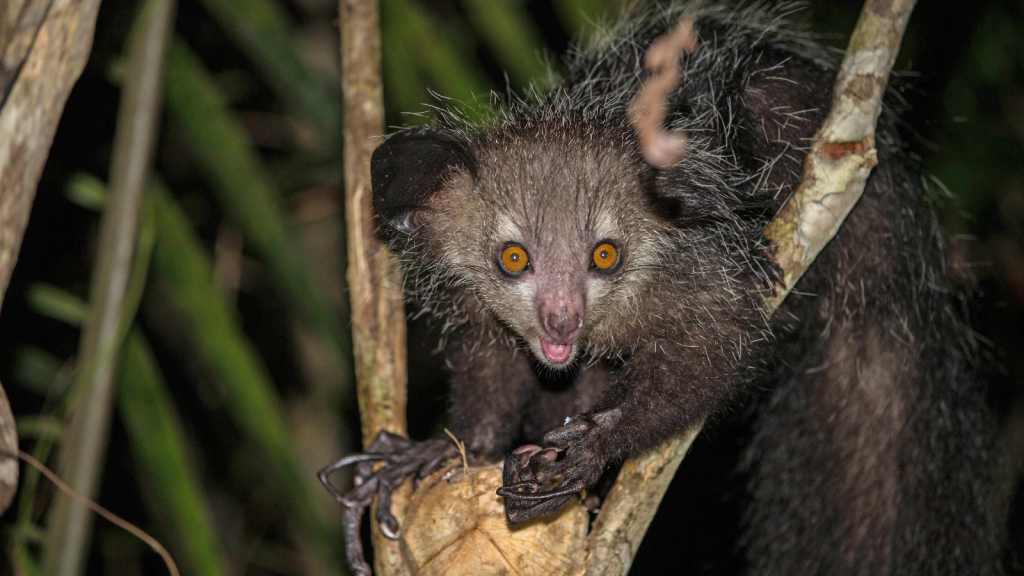Deep in the forests of Madagascar lurks a creature that seems to have leapt straight from a nightmare. With its bulging eyes, bat-like ears, and an unnervingly long middle finger, the aye-aye is often described as the world’s strangest primate. But beneath its peculiar appearance lies a fascinating animal with unique adaptations and behaviours. Despite being surrounded by myth and superstition, the aye-aye plays a crucial role in its native ecosystem. Let’s explore some intriguing facts about this bizarre and misunderstood creature that will make you see it in a whole new light.
Nightmare Fuel or Nature’s Masterpiece?
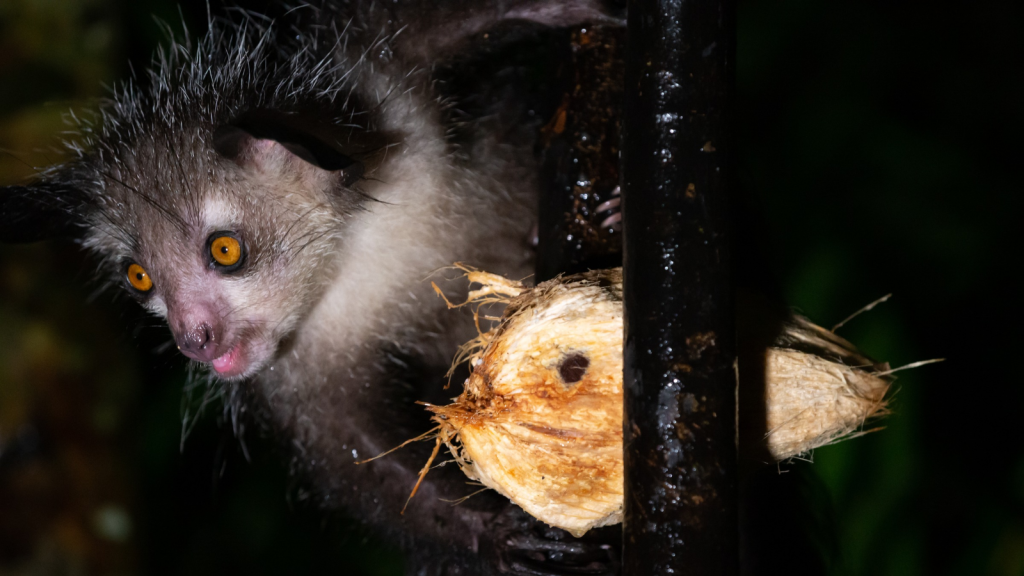
The aye-aye’s appearance is certainly striking. With its dark, shaggy fur, rodent-like teeth, and those enormous eyes, it’s easy to see why some find it unsettling. However, each of these features serves a purpose, helping the aye-aye thrive in its forest home. Its unique appearance is a perfect example of how evolution shapes animals to fit their specific ecological niches.
The Longest Finger in the Primate World
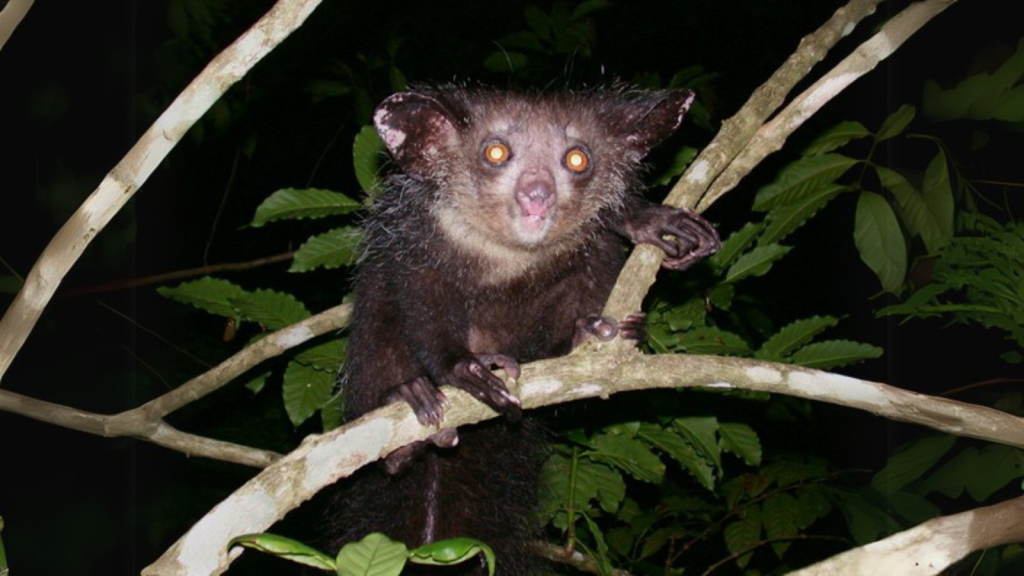
The aye-aye’s middle finger is a marvel of evolution. It’s unusually thin and can rotate 360 degrees, allowing the aye-aye to tap on trees and listen for hollow areas that might contain grubs. This unique adaptation helps it find food in a way no other primate can. The finger can grow up to three times the length of its other digits, making it an incredibly versatile tool.
Nocturnal Ninja
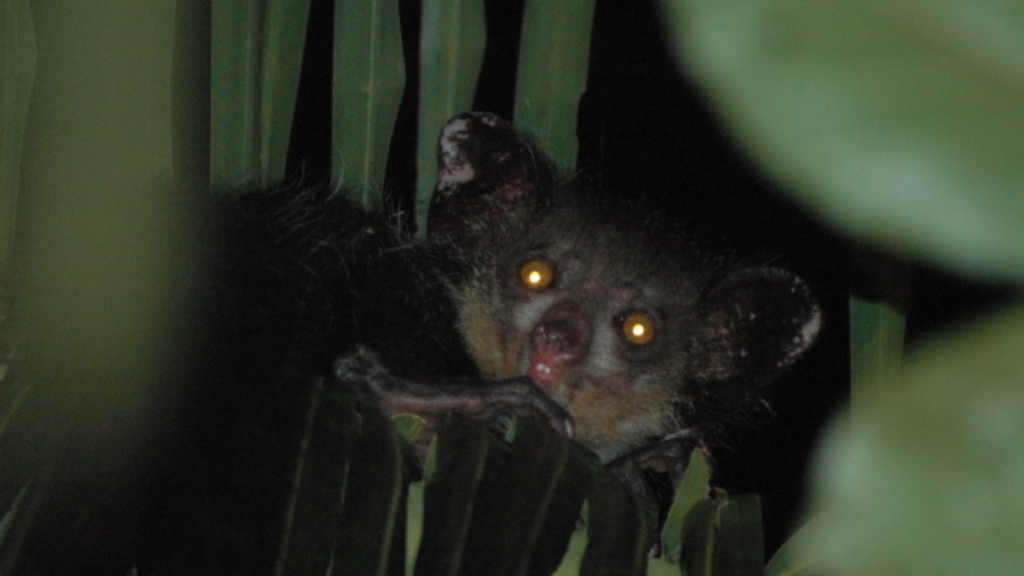
Aye-ayes are strictly nocturnal, emerging at night to forage for food. Their large eyes are perfectly adapted for night vision, allowing them to navigate the dark forest canopy with ease. These eyes can reflect light, creating an eerie glow that adds to the aye-aye’s mysterious reputation.
Coconut Head
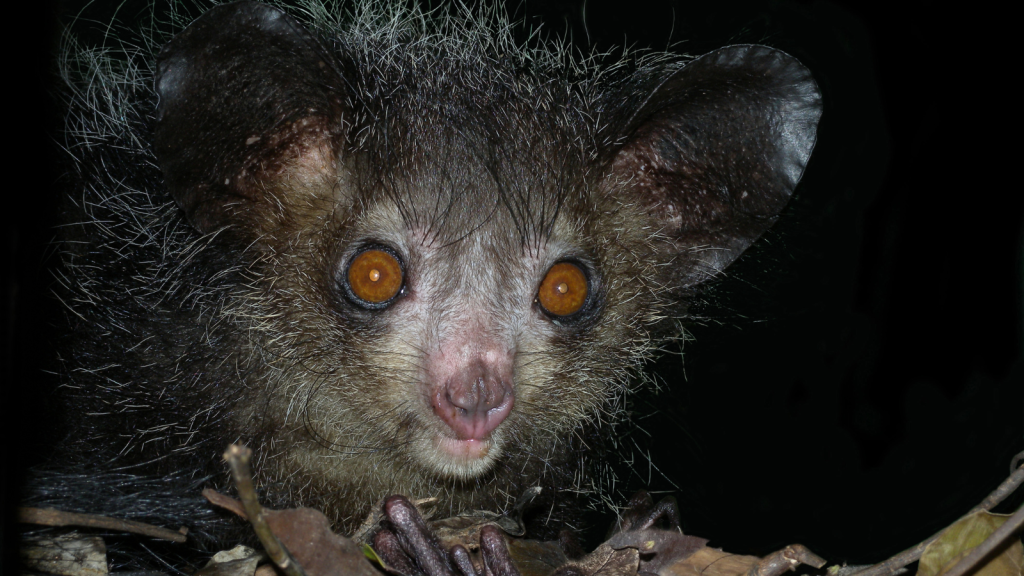
The aye-aye’s skull is unusually large compared to its body size. This adaptation provides extra space for its impressive brain and powerful jaw muscles, which it uses to gnaw through tough tree bark. The skull’s unique structure also allows for enhanced hearing, crucial for its percussive foraging technique.
Rodent or Primate?
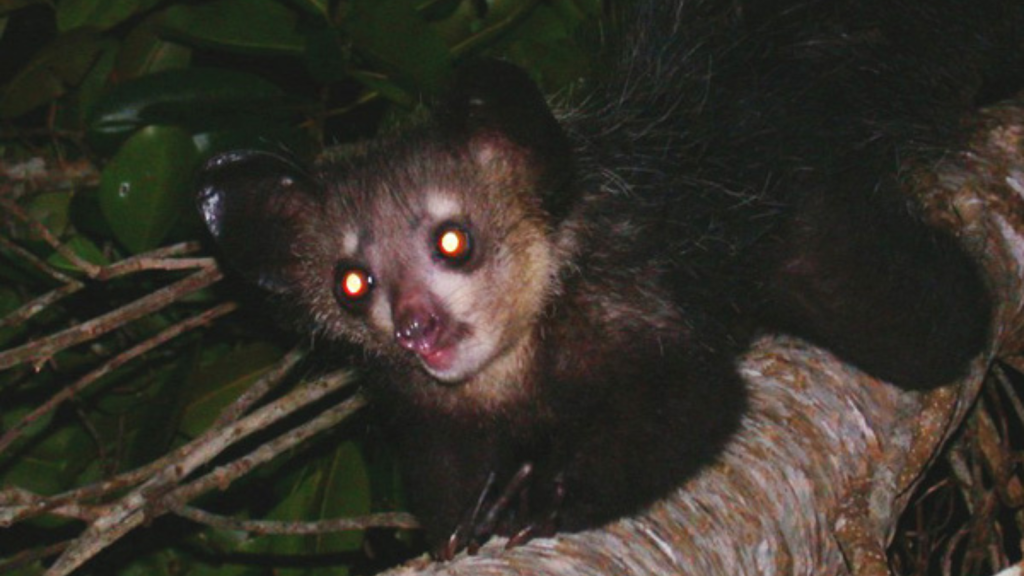
Early naturalists mistakenly classified the aye-aye as a rodent due to its ever-growing incisors. It wasn’t until 1863 that it was correctly identified as a lemur, a type of primate found only in Madagascar. This confusion highlights the aye-aye’s unique evolutionary path, blending characteristics of different animal groups.
Superstitious Fears
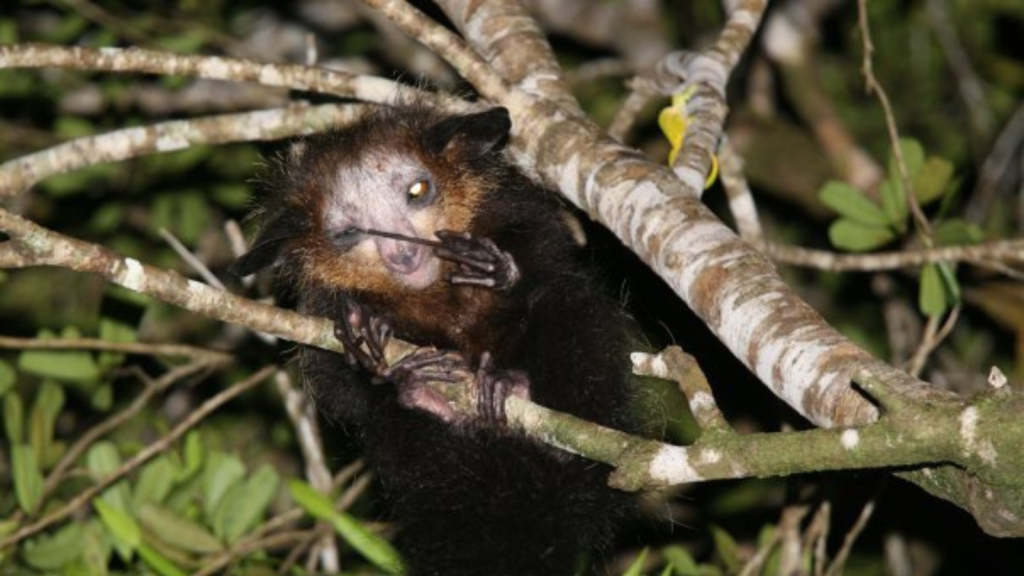
In some parts of Madagascar, the aye-aye is considered a harbinger of doom. Local superstitions claim that if an aye-aye points its long middle finger at you, you’re marked for death. Sadly, this belief has led to persecution of these harmless creatures. Conservation efforts now focus on educating local communities about the aye-aye’s true nature and ecological importance.
Forest Farmers
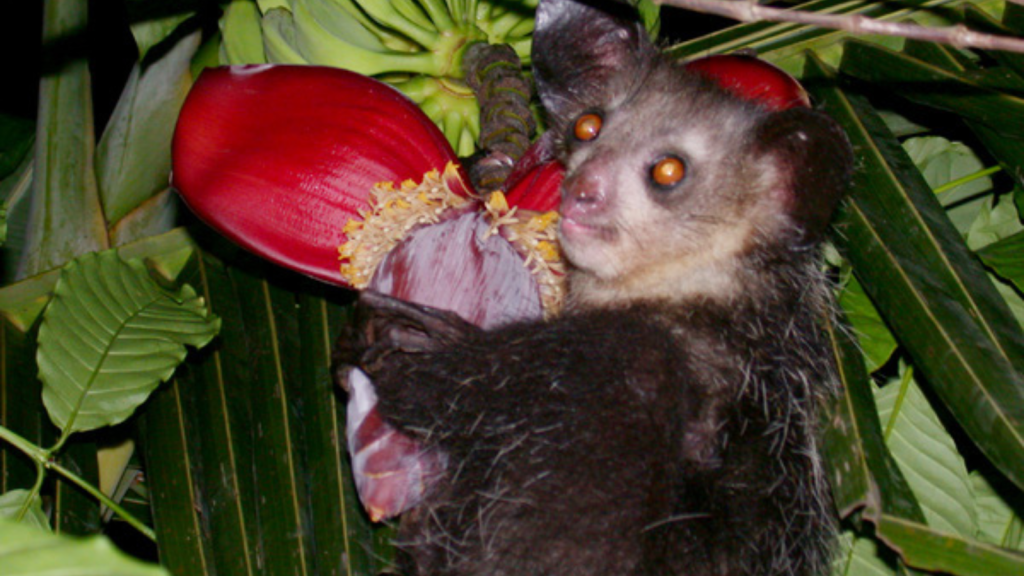
Aye-ayes unintentionally help regenerate their forest habitat. When feeding on ramy nuts, they often drop partially eaten fruits, effectively planting seeds that grow into new trees. This behaviour makes them important seed dispersers, contributing to the health and diversity of their forest ecosystem.
Solitary Spirits
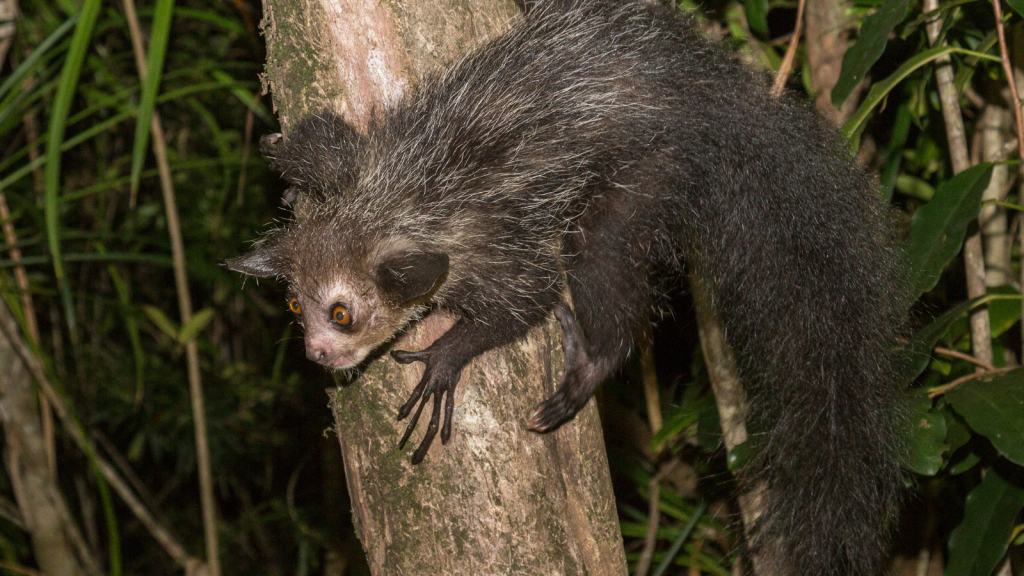
Unlike many primates, aye-ayes are generally solitary creatures. They come together only to mate, with females raising their young alone for up to two years. Each aye-aye maintains a large territory, which they mark with scent glands to warn off other aye-ayes.
Lengthy Childhood
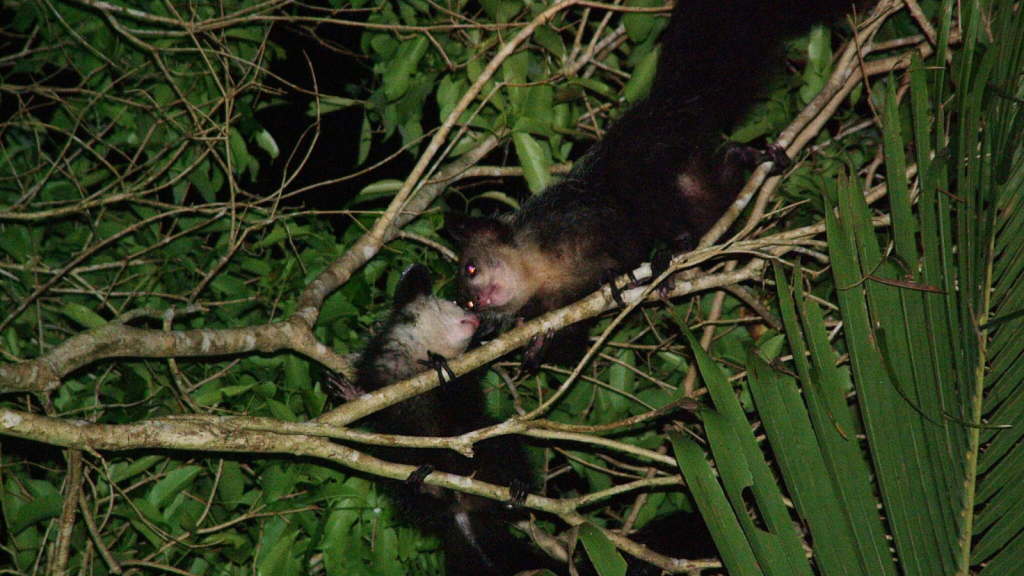
Aye-aye infants have a long period of dependency. They stay with their mothers for up to two years, learning the complex skills needed to survive in the forest. This extended childhood allows young aye-ayes to master the intricate foraging techniques that are crucial for their survival.
Canopy Acrobats
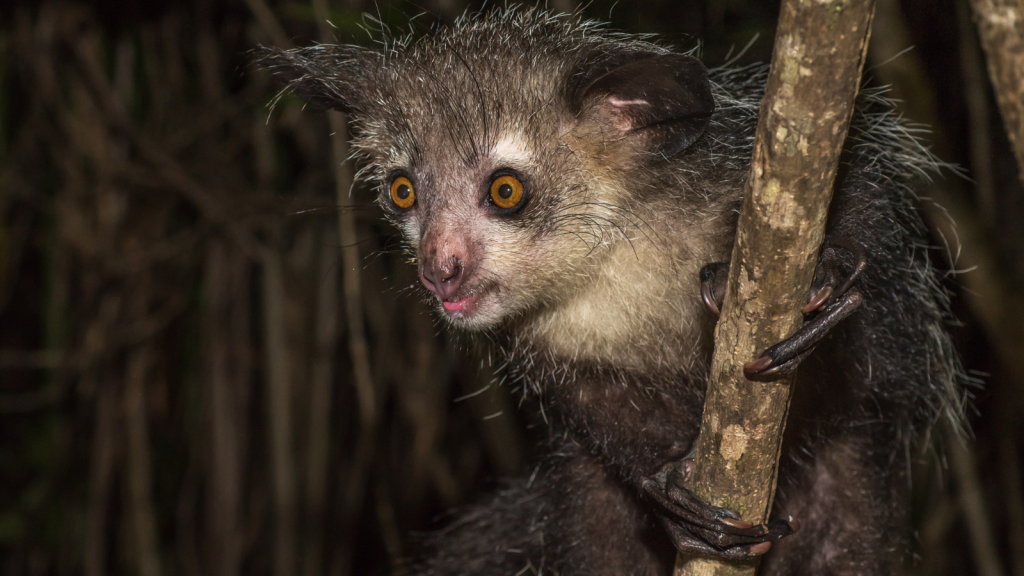
Despite their somewhat ungainly appearance, aye-ayes are agile climbers. They spend most of their time high in the forest canopy, using their strong legs and grasping hands to move between branches. Their unique hand structure, with pseudo-opposable thumbs, allows them to hang upside-down while foraging.
Nature’s Woodpeckers
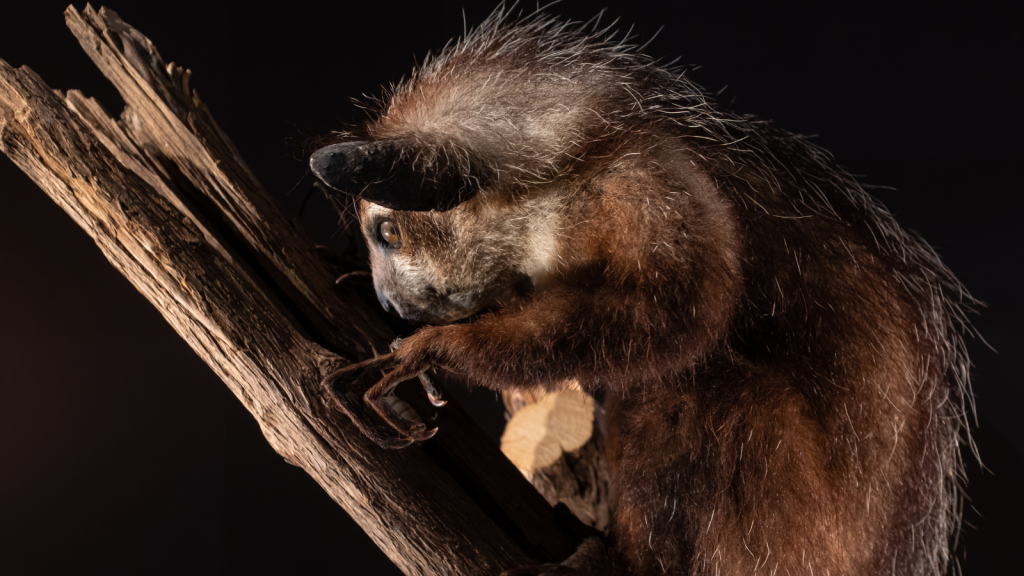
In the absence of woodpeckers in Madagascar, aye-ayes fill this ecological niche. They use their specialised fingers to find and extract insects from trees, much like woodpeckers do with their beaks. This adaptation allows them to access food sources that are unavailable to other animals in their ecosystem.
Varied Diet
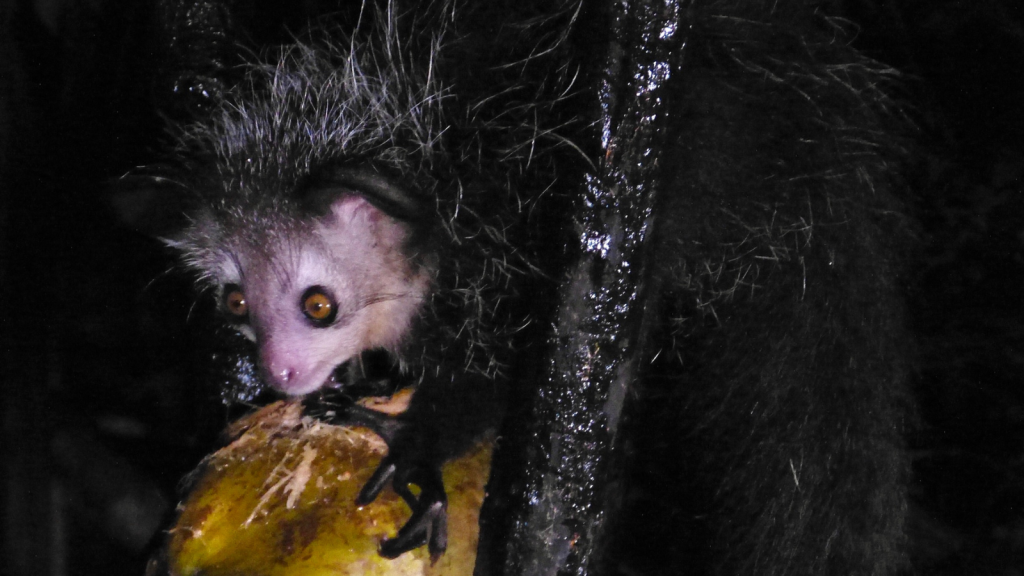
While insects make up a significant part of their diet, aye-ayes are opportunistic feeders. They also enjoy fruits, nuts, fungi, and even farm crops like coconuts and lychees. Their diverse diet helps them survive in a range of forest habitats and adapt to seasonal changes in food availability.
Built-in Bottle Opener

The aye-aye’s unusual teeth aren’t just for show. Their powerful incisors can gnaw through the hard shells of nuts and even coconuts, accessing the nutritious flesh inside. These teeth grow continuously throughout their lives, compensating for the wear caused by their tough diet.
Extreme Sexual Dimorphism
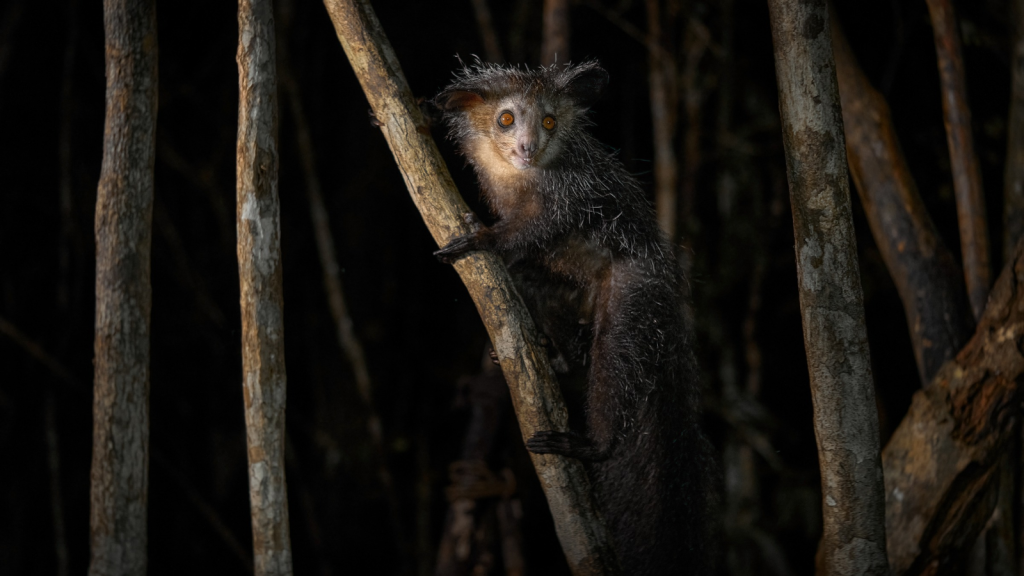
Male aye-ayes are noticeably larger than females, with an average weight difference of about 400 grams. This size difference is among the most extreme in primate species. The larger size of males may be related to competition for mates or territories.
Long-lived Lemurs
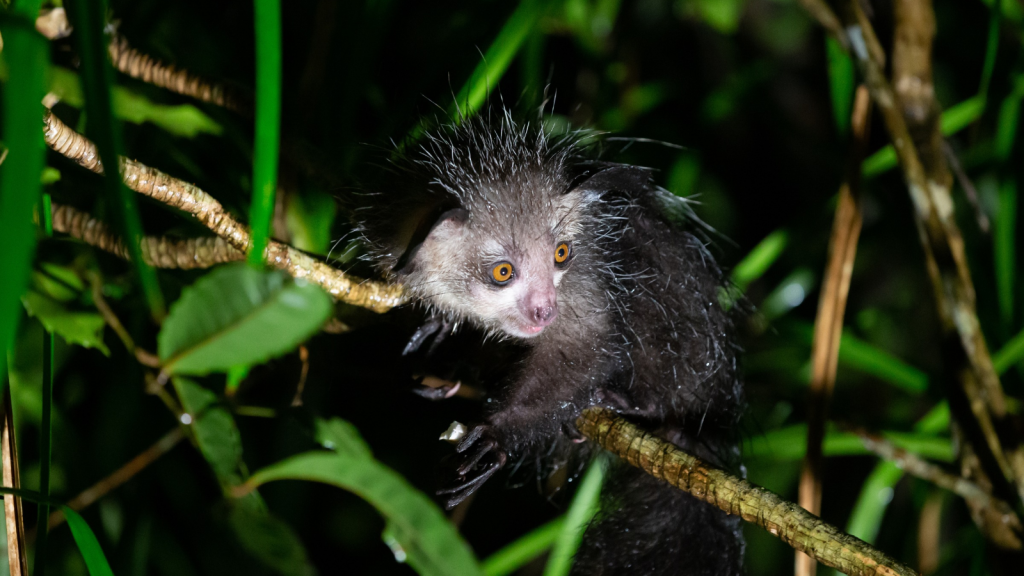
Despite their challenging lifestyle, aye-ayes can live surprisingly long lives. In captivity, they’ve been known to survive for over 20 years. This longevity allows them to produce multiple offspring over their lifetime, contributing to the survival of their species.
Unique Family Tree
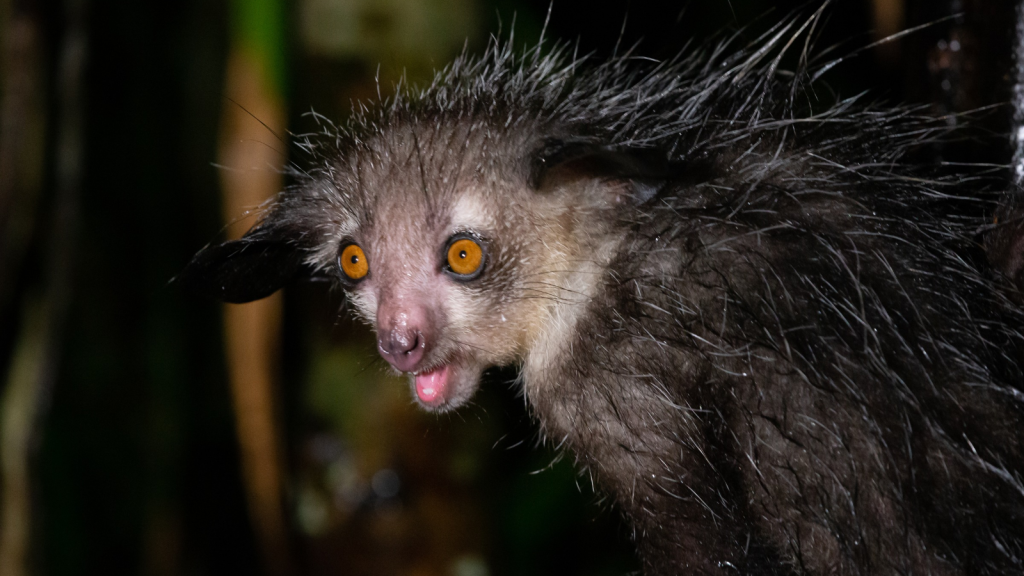
The aye-aye is the only living member of the family Daubentoniidae. This means it has no close living relatives and represents a distinct branch of primate evolution. Genetic studies suggest that the aye-aye lineage split from other lemurs over 50 million years ago.
Talented Tail

The aye-aye’s bushy tail isn’t just for show. It helps with balance during climbing and can even be used as a blanket when the animal is sleeping. The tail is nearly as long as the aye-aye’s body, making it an impressive feature of this unusual primate.
Smell You Later
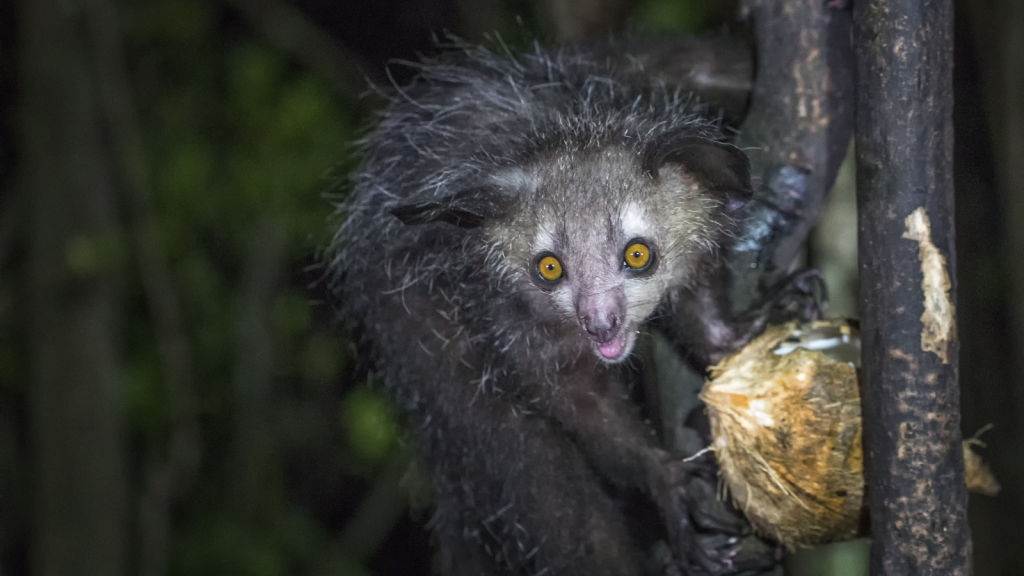
Aye-ayes have a keen sense of smell, which they use to locate food and communicate with other aye-ayes. They mark their territories with scent glands located on their cheeks. This olfactory communication is crucial in maintaining their solitary lifestyle and avoiding conflicts with other aye-ayes.
Conservation Concerns
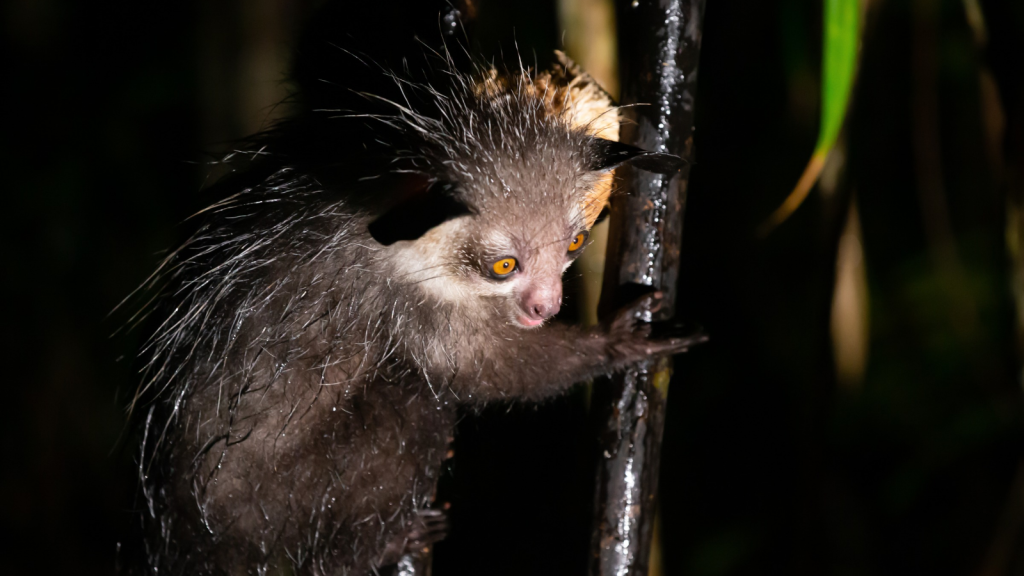
Sadly, aye-aye populations are declining due to habitat loss and persecution. Conservation efforts are underway to protect these unique primates and educate local communities about their ecological importance. Captive breeding programmes in zoos around the world are also helping to ensure the survival of this fascinating species.
Becky is a fervent wildlife enthusiast and pet care expert with a diploma in canine nutrition. Her love for animals stretches beyond the domestic, embracing the wild tapestry of global fauna. With over a decade of experience in animal welfare, Becky lends her expertise to OutlandishOwl through insightful articles, captivating wildlife information, and invaluable guidance on pet nutrition. Her work embodies a deep commitment to understanding the intricate lives of animals and a passion for educating others on sustaining natural habitats. Becky's hands-on conservation efforts and her knack for translating complex dietary science into practical pet feeding tips make her an indispensable voice for creatures great and small.

